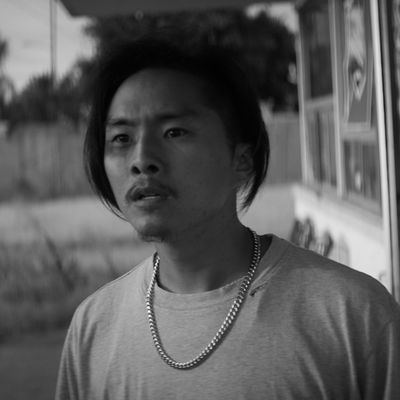
In an essay on the now-defunct MTV News reflecting on her childhood memories of the 1992 L.A. riots, critic Inkoo Kang wrote, “Destroyed businesses aren’t ended lives. But businesses do represent dreams and hopes and livelihoods and life savings — and the sudden demolition of those things deserves to be remembered.” Such a business (over 2,000 were damaged or destroyed during the riots) serves as the backdrop for filmmaker and actor Justin Chon’s striking Gook, a rare account of those five dark days told from a primarily Korean-American perspective. But the modest shop run by its two leads in the sun-baked southland city of Paramount doesn’t just resemble the capitalist American dreams of its owners; it represents an often-fraught effort to exist within a diverse community.
Gook is set on April 29, 1992, the day the verdict for the police officers charged with the beating of Rodney King came down, and the grief and anger that had already been running hot boiled over onto the streets of south L.A. Eli (Chon) and Daniel (David So) are brothers who tend to their family’s shoe store with workaday responsibility — there are, refreshingly, no stakes added about saving up to buy a shiny new location, or trying to turn their tiny shack into a megastore. They’re just there to sell shoes and earn a living, as their deceased parents did before them. Eli, with his wiry swagger and charm, is the de facto leader; the sensitive Daniel has dreams of becoming an R&B singer. They have an unofficial third employee in Kamilla (Simone Baker), a young black girl from the neighborhood who hangs out at the store against her family’s wishes.
The film is gorgeously shot in black and white by current USC grad student Ante Cheng, rendering the blue expanse of the California skies a grainy gray even before the fires break out. The cinematography lends a surreal heightening effect to the film’s events, which Chon would probably be first to admit are not the most dramatic in the context of the riots. There is no real chaos in Gook. We never see the glass-covered streets and National Guard tanks that have become the go-to imagery for this chapter in history. When the sirens start wailing and the pillars of smoke rise up, they are in the distance. Chon is using a completely different visual vocabulary to talk about the riots, and it’s ominous in a way that forces the viewer to imagine a calamity of this scale unfolding in their own city.
As tensions grow not only in the city, but between the brothers and Kamilla’s uncle Keith, the film never overexplains its historical context, particularly as it pertains to Korean and black relations in L.A. These two communities existed side by side throughout much of the city, but enmity and misunderstandings abound, and the 1991 killing of 15-year-old Latasha Harlins at the hands of Korean shop owner Soon Ja Du soured things disastrously. Gook nods to this through the character of Mr. Kim, who owns a liquor store across the street from the brothers. (He’s played by Sang Chon, the director’s father and former Korean child star, who moved to America and started the very shoe store Gook’s is based on.) Mr. Kim first appears to be a foil for Eli and Daniel, an older-generation immigrant who refuses to use English and appears to have little respect for his black clientele, particularly Kamilla. In the dim black-and-white of his store, his face looks like a mask of permanent contempt.
The film eventually redeems him, and directly ties him to Eli and Daniel, in a bit of movie cuteness that feels unnecessary. If there’s a weakness of Gook it’s its insistence on finding saintliness in all of its characters. Kamilla is a quirky skater girl who wears a flower in her hair, she tells Eli wistfully, because there are none in her neighborhood. The brothers, while pleasant company for us as viewers, feel anachronistic: hip, cute, culturally fluent young men who just don’t understand how anyone could be racist (and have apparently spent their entire lives never questioning the circumstances surrounding their parents’ deaths). I suspect they are not really meant to be representative of the average Korean shop owner in 1992, but more like audience surrogates, down to their trendy-again ’90s streetwear.
But the story of Korean business owners during the riots is an often tragic rejoinder to the myth of the model minority: As Asian immigrants were allowed to be more “white” than other minorities — economically, culturally — their businesses and bodies were also the easiest surrogate when the police abandoned south Los Angeles and Koreatown. And in turn, they took their cues from the LAPD at its worst: The images of polo-shirt wearing Asian men with rifles lining the rooftops of Koreatown is one of the more troubling images from April 1992. Gook purposefully chooses not to tell a story of that scale, but I did wish it could have found more moral complexity in the corner of the city it chose to depict. The film ends with a tragedy that seems inevitable even from the film’s opening moments, but in the brief moments of grieving afterward, there’s a glimpse of film that is less remote, one as emotional and messy as Los Angeles was then and often still is.

